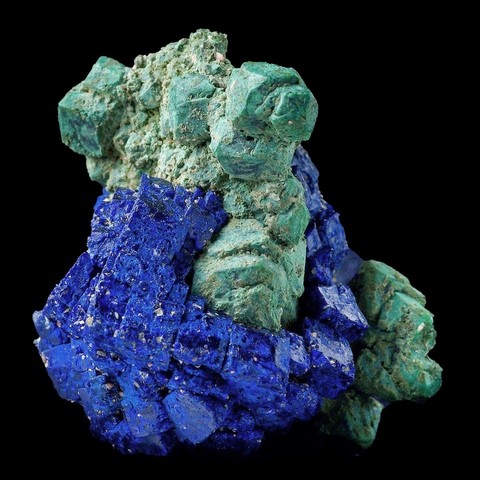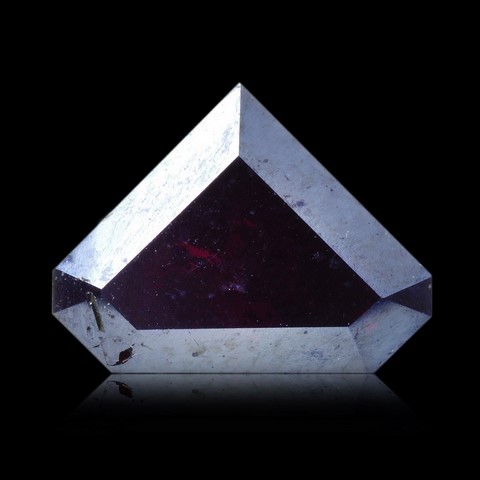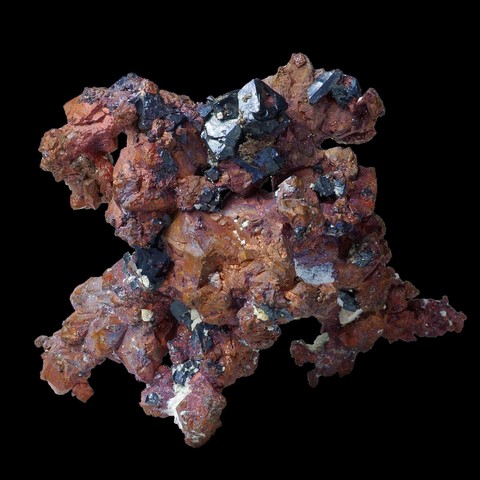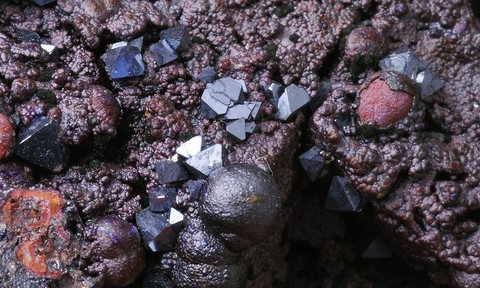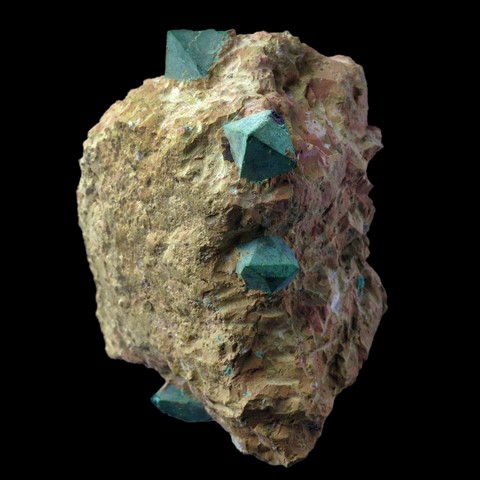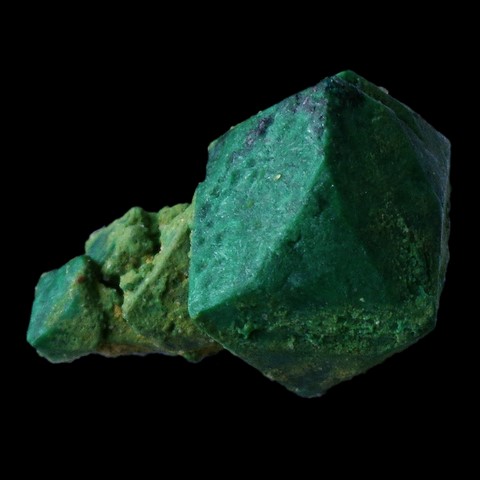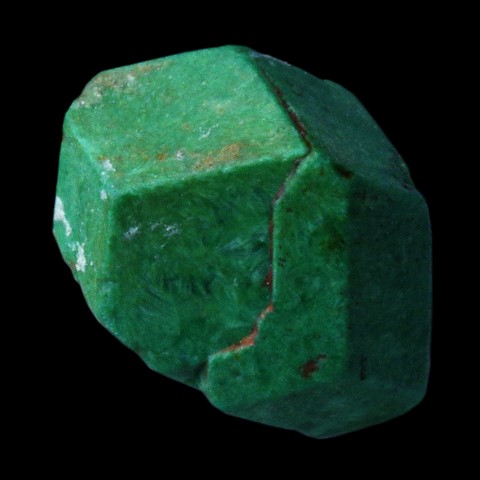CUPRITE
Class : Oxides and hydroxides
Subclass : Oxides
Crystal system : Cubic
Chemistry : Cu2O
Rarity : Uncommon
Cuprite is a relatively uncommon oxide in the surface areas of copper deposits, where it generally coexists with native copper as well as other oxidized copper minerals such as malachite, azurite or chrysocolla. It was first described by the Austrian mineralogist, geologist and physicist Wilhelm Karl Ritter von Haidinger in 1845. Its name comes from the Latin cuprum (copper). The cuprite is blood red and translucent in small crystals while the larger crystals are often opaque, dark red to metallic black. Malachite pseudomorphs are common, azurite pseudomorphs are rarer. Generally massive and earthy, the developed crystals are rare, the most widespread form is the octahedron, but it can also crystallize in dodecahedra or cubes, note that there is an acicular variety by elongation according to [001] that we call "chalcotrichite". Cuprite is locally an important industrial mineral. It can also be cut in cabochon for jewelry, but its low hardness makes it useless.
Cuprite in the World
Cuprite in France
In France, the Chessy copper deposit in the Rhône department is worldwide known for its magnificent octahedra and dodecahedra of malachite pseudomorph after cuprite, which can sometimes exceed 3 cm in size.
Many other French localities have produced micro-crystals like : Le Moulinal (picture on left), Le Crozet (Loire), Les Mas Dieu (Gard), Villecun (Hérault), Laguépie, Le Burc, Montroc (Tarn), Cap Garonne (Var), etc...
Twinning and special crystallisations
Penetration twins are common.
Malachite pseudomorphs are common (photo on left), cuprite crystals can also be replaced more rarely by azurite, these transformations come from a carbonation that follows the oxidation of Cu+ ions in Cu2+. Native copper pseudomorphs after cuprite crystals has been discovered, but also cuprite epitaxies on native copper crystals.
Fakes and treatments
No fakes known.
Hardness : 3.5 to 4
Density : 5.8 to 6.1
Fracture : Irregular to conchoidal
Trace : Red to brown
TP : Transparent to opaque
RI : Not measurable
Birefringence : 0
Optical character : None
Pleochroism : None
Fluorescence : None
Solubility : All acids or bases
Magnetism : None
Radioactivity : None



